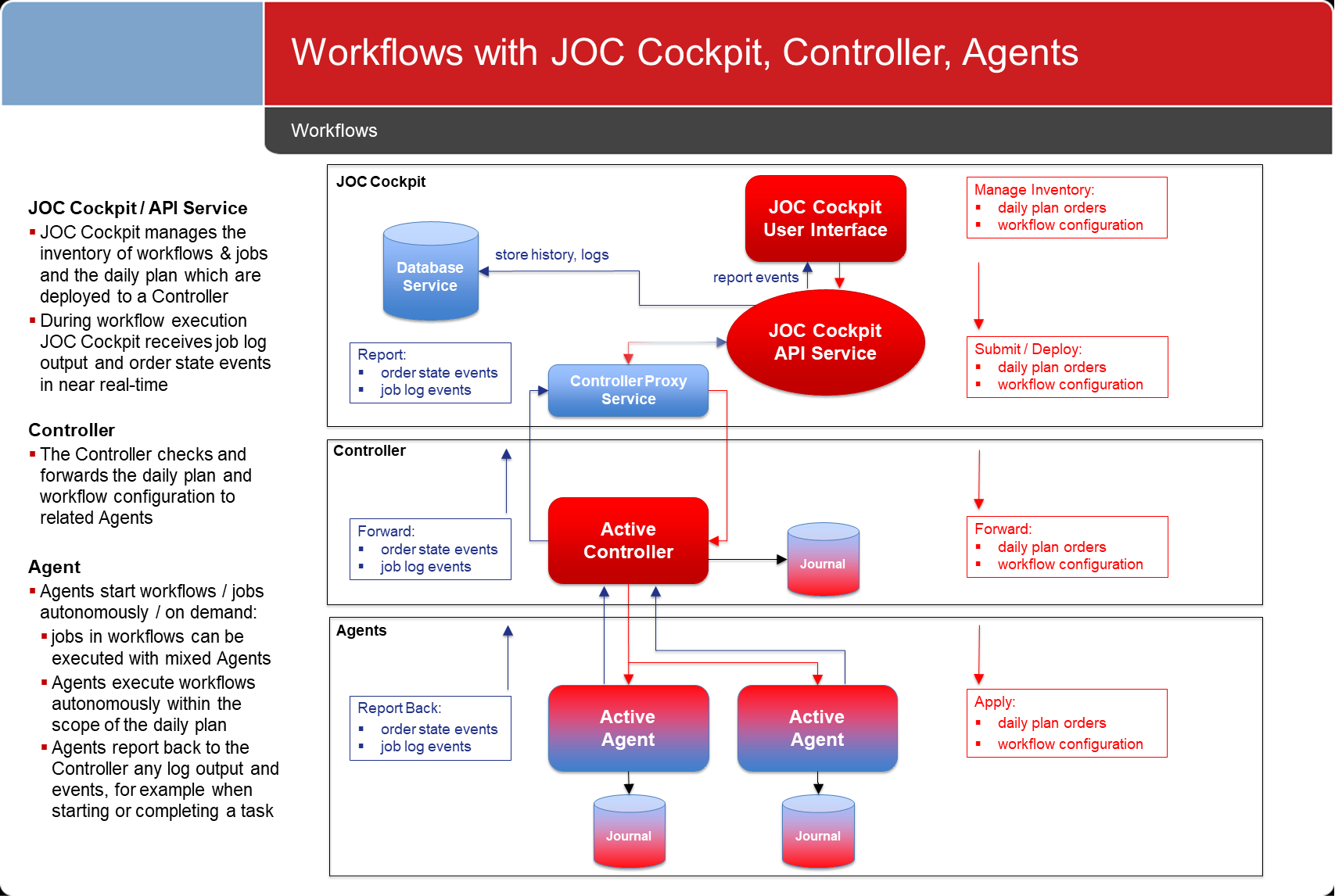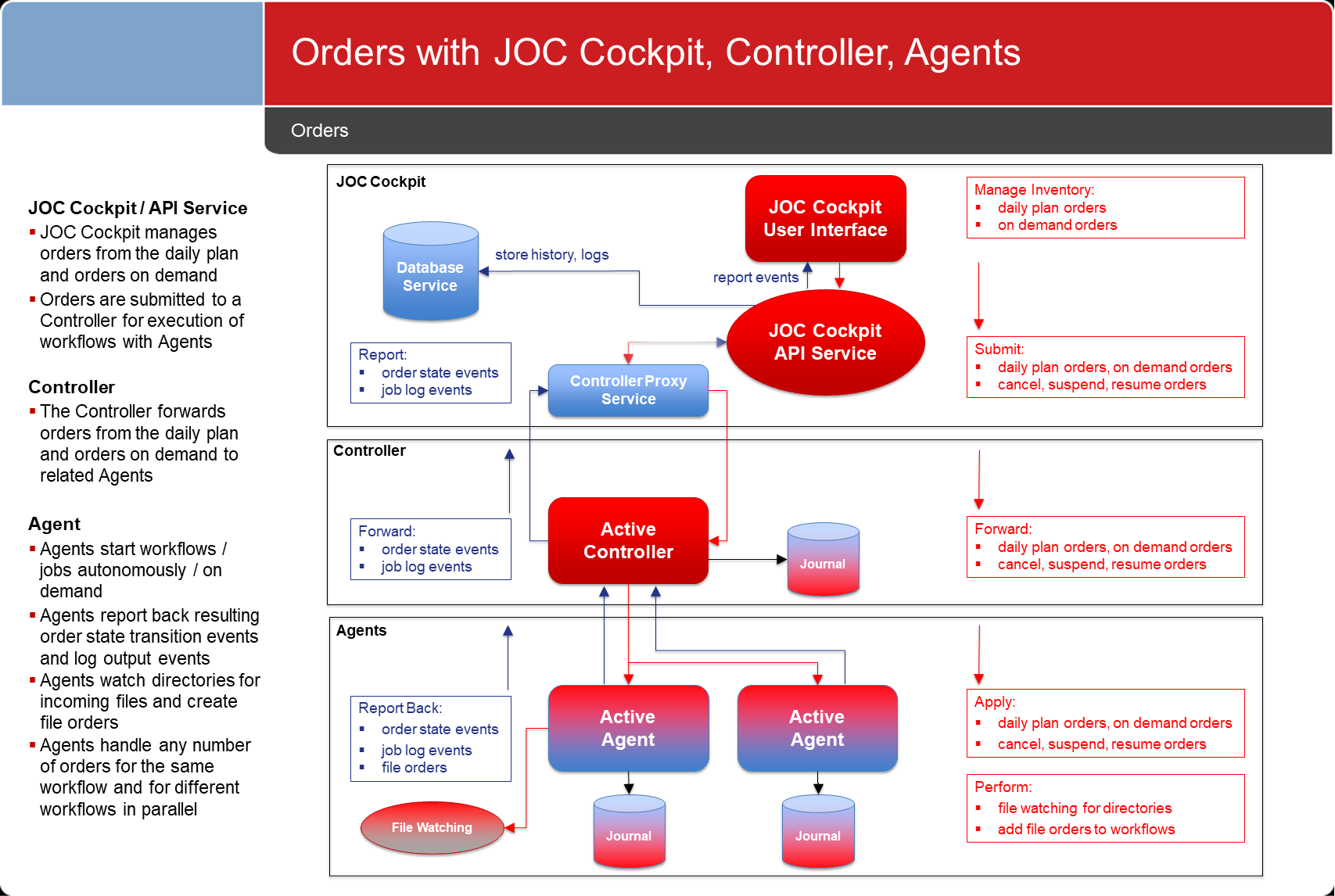Introduction
- The implementation architecture describes:
- the products used,
- embedding of components and
- component communication.
- Clustering is described as:
Implementation Architecture
- Download: JS7_JobScheduler_Implementation_Architecture.pptx
- Download: JS7_JobScheduler_Implementation_Architecture.pdf
- Use the links above if the document below does not display in your browser:
Workflows and Orders
Workflow configurations are deployed from the JOC Cockpit to a Controller that forwards them to the connected Agents:
- Agents execute instructions and jobs from a workflow.
- Agents report back execution results and the job log output by returning events.
Orders are managed by the JOC Cockpit and are submitted to Controllers that forward them to the connected Agents:
- Agents start workflows based on the order's scheduled start time.
- User interventions include canceling, suspending and resuming orders. Such operations are sent by the JOC Cockpit to the Controller which then forwards them to connected Agents.
Controller and Agent Implementation Architecture
- A Controller Cluster provides automated fail-over between Active and Standby Controller instances.
- Controllers hold a journal for restart capabilities which includes workflow configurations and order state events:
- The JOC Cockpit History Service subscribes to such events to maintain the History and to forward events to the GUI.
- Events are released by a Controller and the journal shrinks once the History has been persistently stored in the database.
- Controllers and Agents store messages in their journal and pass them asynchronously. This mechanism recovers communication in case of outages lasting hours or days.
JOC Cockpit Implementation Architecture
- JOC Cockpit can be operated in the following modes:
- single instance,
- active-passive clustered instances with one active instance and any number of standby instances.
- Cluster Service
- manages a number of Background Services:
- JS7 - Monitor Service: checks execution history for events that users receive JS7 - Notifications for.
- JS7 - Cleanup Service: purges the JS7 - Database to limit for example the size of the history.
- JS7 - History Service: receives execution results and logs from a Controller instance.
- JS7 - Daily Plan Service: creates and submits orders to Controllers on a daily basis.
- guarantees service execution:
- checks the cluster health status of any connected JOC Cockpit instances,
- performs a fail-over operation in case the active JOC Cockpit instance fails.
- manages a number of Background Services:
- Event Bus Service
- An event bus manages communication between JOC Cockpit services:
- events are published in a producer/consumer (publish/subscribe) model,
- events are asynchronous, i.e. a service does not rely on immediate responses,
- events are not persistent, i.e. they are removed after being consumed or after a timeout,
- events are considered informational for the user interface that is updated in near real-time.
- An event bus manages communication between JOC Cockpit services:
- Proxy Service
- On start-up the Proxy will retrieve a snapshot of the Controller's journal and will subsequently receive any events fired by a Controller.
- The Proxy implements an event queue that is subscribed to by a number of consumers, for example by Background Services and by the GUI.
Resources
Overview
Content Tools

